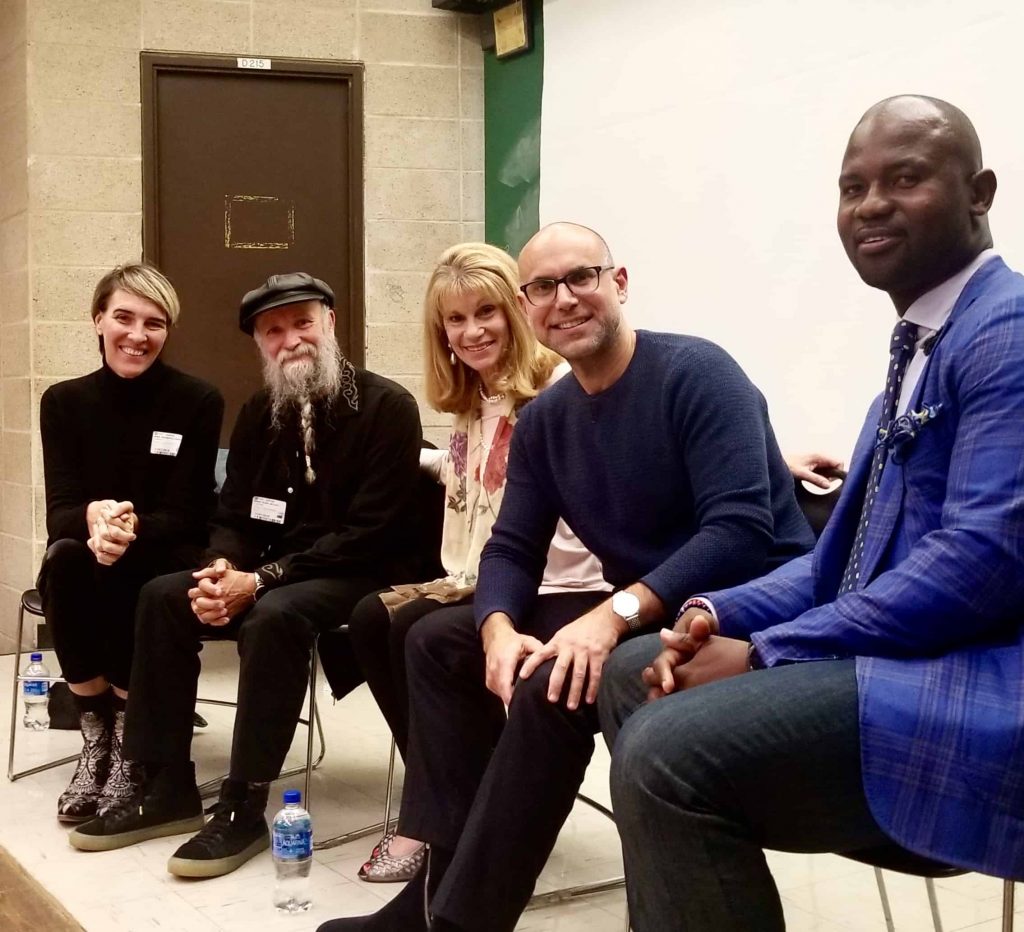MENSWEAR DESIGNERS ON WHAT IT’S REALLY LIKE BEING A DESIGNER


MR magazine and the fashion design department at New York City’s Fashion Institute of Technology (FIT) sponsored a panel discussion last week, hoping to inspire young people to pursue a career in menswear design. Three brands at varying stages of development (Zachary Prell, Edward Armah, and Krammer & Stoudt) shared their journeys, along with some tips on what to do, and what not to do, to launch a successful brand. A special thanks to Mary Wilson and Sal Cesarani at FIT.
Zachary Prell started his career as an investment banker. The dress code was business casual so he came to work every day in pants and button-down shirts that never quite fit. His goal became to reimagine the sport shirt based on comfort, fit and versatility. After graduating from Columbia Business School, he took a trip to China, assisted by some previously-made contacts at Li & Fung, a major sourcing firm. Starting out with nothing (his warehouse and showroom were in his NYC apartment; he and his friends were the fit models), he persistently knocked on doors to sell his shirts. In the fall of 2008, he got into a single door at Nordstrom; he’s now in 90 Nordstrom doors, in Bloomingdales, and in better specialty stores with not just shirts but an entire cool sportswear collection.
Before founding Krammer & Stoudt, Mike Rubin was a commercial artist at Disney, Courtenay Nearburg (his business and life partner) a photographer. But their mutual passion for menswear gave them the courage to take on a new career in their 40s. They lived in LA, took some seminars, found some mentors, and started showing at tiny trade shows “that no one goes to,” according to Courtenay. “We first thought we’d build a business with surfwear but then we lived for a while in Italy and Mike was inspired by Versace-type pieces. Ultimately, we moved back to NYC and started making suits, all in New York with fabric from the top Italian mills.” In fact, their current upscale, fashion-forward collection is still produced here, except for some shirts made in Portugal.”
Edward Armah is from Ghana and, after moving to the States and selling radio ads, took a job in the shoe department at Nordstrom. From there, he worked in men’s accessories and then tailored clothing at Neiman’s, where one of his regular clients was Andre Benjamin of OutKast. He also made the acquaintance of Mike Cohen who offered him a job at Oxxford, arguably the finest hand-made clothing in the world. From there, he went to Saks where he sold men’s furnishings, including gorgeously colored bowties and pocket squares that he designed and created himself. When other stores wanted the product, Armah somehow found the courage to give up a steady income and go out on his own. His now extensive men’s accessory collection sells in Neiman Marcus, Stanley Korshak, Harry Rosen, and many other great stores.
Asked for the best advice they’d give to emerging designers, Prell doesn’t hesitate. “There’s so much product out there today, so many new digitally-native brands. Try to design product that solves a specific problem; that has a raison d’etre. Then focus on your brand messaging so that it ties into the problem you’re solving. I think what’s also helped me is that I’m a real person, and I’m accessible. When I visit stores, customers want to hear my story. Since we don’t have our own retail outlets, we try to leverage our partnerships with our wholesale accounts with trunk shows and other events. Final tip: consider a multi-brand showroom until you’re big enough for your own in-house sales.”
Courtenay from Krammer & Stroudt suggests getting a good PR person and strongly advises newcomers to focus on digital opportunities. “We didn’t see the potential of digital in 2014; we pursued wholesale but with our type of product—high-end, fashion-forward styles targeted to creative professionals with a certain income—many of the stores we first sold to have disappeared. So we’re now playing-catch-up with digital marketing. But through Erin Hawker at Agency PR, we’ve been showing at New York Men’s Days and getting some rave reviews, even from The New York Times, which is really helpful.”
“Start early and forget your fear,” Edward Armah advises aspiring designers. “Embrace the future and explore all digital opportunities. I’m even trying a new retail opportunity at Newark airport: a kiosk that projects my image and voice and carries all my products. Learn as much as you can by connecting with established companies, gain positive press by working with charities, and send your product to influencers, even presidents!”
The seminar concluded with panelists sharing contacts and advice, among themselves and with those in the audience. This willingness to help other designers, even competitors, is what separates our industry from others and reminds us what’s most wonderful about the menswear business!








